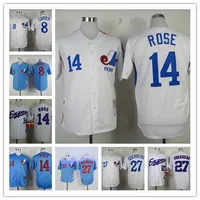- Pro Maple Composite Wood Hybrid L180 Bat by AXE: A ReviewPosted 6 years ago
- Book Review: Heroes, Scamps and Good GuysPosted 7 years ago
- Book Review: Baseball Before We Knew ItPosted 7 years ago
- Book Review: Omar!Posted 7 years ago
- Book Review: A Deadly GamePosted 7 years ago
- Book Review: The Manager’s DaughterPosted 9 years ago
- Baseball in the Garden of Eden, A Book ReviewPosted 14 years ago
PUNCHING TICKETS TO THE HALL OF FAME
- Updated: January 4, 2024

Views: 11
It’s been said the best test to determine whether someone belongs in the Hall of Fame or not is
how much one must think about it. If one must think about a candidate’s credentials too long, he
or she does not belong. Just say the name followed by “Hall of Famer.” If that statement
immediately makes all the sense in the world, then the candidate belongs. But not if you hesitate
even for a moment. Babe Ruth Hall of Famer. Walter Johnson Hall of Famer. Mickey Mantle
Hall of Famer. Derek Jeter Hall of Famer. No hesitation. You can even do it with active players
and foresee the future. Shohei Ohtani Hall of Famer. Mike Trout Hall of Famer. Mookie Betts
Hall of Famer.
Place the “Hall of Famer” moniker on others, however, and it doesn’t immediately sound right
for different reasons. For some, just having to think about these reasons to determine Hall of
Fame candidacy is enough to deny it. Roger Clemens Hall of Famer (steroids). Pete Rose Hall of
Famer (gambling). Carlos Beltran Hall of Famer (cheating). Andruw Jones Hall of Famer
(borderline statistical performance). Jeff Kent and Curt Schilling both have worthy credentials
but never garnered enough votes just because they didn’t get along with many members of the
BBWAA (Baseball Writers Association of America). Unfortunately for them, they’re the ones
who vote.
To complicate matters, the criteria for election changes over the years. Voters in 1936 relied on
traditional statistics for measuring sticks such as home runs, RBI, batting average, earned run
average, wins and strikeouts. Modern voters, however, dive deep into sabermetric statistics that
were not available to earlier voters. They eschew wins for pitchers in favor of ERA+ or FIP.
They value OPS+ and OBP more than batting average. Furthermore, standards of character are
imposed upon candidates today more than ever before. Consider Ty Cobb Hall of Famer. No
doubt or hesitation in 1936. He was an elected member of the very first Hall of Fame class. But
if Cobb played today, his habit of spiking opponents on the basepaths and fighting fans in the
stands probably would have dissuaded some voters.
However, if we do start taking enough time to think about the credentials of some candidates that
have been kicked to the curb, a clearer picture of their Hall of Fame case might come into focus.
Think about their value when measured by statistics not available during their initial candidacy.
Think about their impact upon the era in which they played. Think about the relevance of their
statistics when compared to their contemporaries. Think about their historical significance upon
the growth of the game.
CY WILLIAMS
Mention the name “Cy” to baseball fans and they will think of Cy Young. Mention the name
“Williams” and they will think of Ted Williams. But Cy Williams, who played for 19 seasons
with the Chicago Cubs and Philadelphia Phillies from 1912 to 1930, had a Hall of Fame caliber
impact on his era. He played half his career in the Dead Ball Era when single digit home run
totals regularly led the league. In 1923, his 41 home runs broke the NL record at that time. It was
a home run total that would have been an astonishing milestone forever etched in baseball
history to fans back then but for one problem…Babe Ruth. It was only the National League
record because Ruth had already shattered all reasonable standards with 54 home runs in 1920
and 59 in 1921. In 1927, Williams once again led the NL with 30 home runs. Unfortunately for
Cy’s legacy, Ruth doubled that total with his famous 60 home run season that year. However,
don’t compare Williams to Babe Ruth. Compare him to other hitters in the National League. He
led his league in home runs four times. Remember, there was no such thing as interleague play
back then except for the World Series. Compare Williams to all the other hitters in his league
who all faced the same pitchers in the same ballparks. He was a two-time National League MVP
(in 1924 and 1927) and was the first hitter to reach 200 lifetime home runs in the NL. He hit over
.300 six times, his OPS was over .900 five times and his OPS+ was over 100 in every season of
his career except for four which means he was better than the average hitter in 15 of his 19
seasons. Let’s compare those figures to one of those no-doubt, don’t-have-to-think-about-it Hall
of Famers, Roberto Clemente. Clemente only won one MVP, finished a season with an OPS over
.900 only four times and surpassed an OPS+ of over 100 in 14 of his 18 seasons. Like Clemente,
Williams was a fierce competitor and a stalwart defensive player. The inscription on every Hall
of Famer’s plaque opens with a line that sums up his career. For a would-be Cy Williams plaque,
it would read:
FREDERICK “CY” WILLIAMS
Chicago, NL 1912-1917
Philadelphia, NL 1918-1930
The Babe Ruth of the National League.
BILL MADLOCK
What if I told you there was a four-time National League batting champion who was NOT in the
Hall of Fame? Only four players in the history of the National League won more batting titles
than Bill Madlock. All of them are Hall of Famers under the “no-doubt” classification. Honus
Wagner and Tony Gwynn won eight, Rogers Hornsby and Stan Musial won seven. Next comes
Madlock and Clemente with four. Madlock played second and third base and won four NL
batting titles in the space of nine years (.354 in 1975, .339 in 1976, .341 in 1981 and .323 in
1983). He was a lifetime .305 hitter and walked more times in his career (605) than he struck out
(510). Only once in his 15 seasons was his OPS+ under 100. Unfortunately, Madlock does not
appeal to modern baseball thinkers. The fact that he walked more than he struck out is lost on
modern voters who devalue the number of times a hitter strikes out in favor of the home run.
Madlock never hit 20 home runs in a season. But the Hall of Fame is well stocked with hitters
who did not hit for power. He also only averaged 57 RBI per season, but he was a top of the
order hitter in the DH-less National League, so there was a pitcher hitting in front of him for
most of his plate appearances. He only played in 17 post season games but of course hit .308 and
uncharacteristically hit 3 home runs in the 1985 NLCS for the Dodgers against the Cardinals. He
was traded for a Hall of Famer (Ferguson Jenkins) in 1973. In the end, perhaps he was
overshadowed by another infielder in the prime of his career in 1975 and 1976 when Joe Morgan
walked away with both MVP awards. Perhaps he’s overlooked because he played with six
different teams. Perhaps the year that separates the Contemporary Baseball Era voters (1980 –
present) from the Veterans Committee voters (prior to 1980) which falls right in the middle of
Madlock’s career has caused a split of the votes. But compare him to another third baseman who
was just elected to the Hall of Fame last year. Scott Rolen hit .281 lifetime with an OPS of .855,
had over 150 hits in a season seven times and averaged 122 hits per year. Madlock hit .305
lifetime with an OPS of .807, had over 150 hits in a season six times and averaged 134 hits per
year.
BILL MADLOCK
“Mad Dog”
Texas, AL 1973
Chicago, NL 1974-1976
San Francisco, NL 1977-1979
Pittsburgh, NL 1979-1985
Los Angeles, NL 1985-1987
Detroit, AL 1987
One of six players in the history of the National League to win at least four batting titles.
DICK ALLEN
If getting elected is a popularity contest, Dick Allen has no chance. When he debuted with the
Philadelphia Phillies in 1963, he was known as Richie Allen and quickly established himself as
one of baseball’s premier power hitters. He won the NL Rookie of the Year in 1964 with 29
home runs, 91 RBI and a .318 batting average. He averaged 29.5 home runs a year in six full
seasons with the Phillies despite playing in the pitcher’s haven that was Veterans Stadium. He hit
40 home runs in 1966 and, in the Year of the Pitcher in 1968 when the league slugging
percentage was .340 and the league OPS was .639, Allen slugged .520 with an OPS of .872. But
the Philadelphia media hated Richie Allen. Newspapers labeled the young slugger a “bad
clubhouse influence” and headlined every time he was fined reporting late to the stadium.
Phillies fans took notice and, true to their reputation, booed Allen unmercifully. Allen regularly
wore his batting helmet when he went to the outfield to play defense because of the frequent
objects thrown his way from the stands. Allen was so anxious to get out of Philadelphia when he
was traded to the Cardinals in 1970, that he changed his name to Dick Allen, hoping to leave
Richie Allen behind in Philadelphia. He responded with a 34 HR, 101 RBI season with the
Cardinals, again murdering the baseball with his unusually heavy 41-ounce bat in a pitcher’s
ballpark in Busch Stadium. If hard hit percentage was in vogue back then, Allen would have
been one of the leaders. Then moving to the American League and yet another pitcher’s ballpark
in Comiskey Park with the White Sox in 1972, he won the AL MVP with 37 HR, 113 RBI and a
.308 batting average. Allen, a 7-time All-Star, had a career .534 slugging percentage, .292
batting average and would even impress the modern sabermetrician with a 156 OPS+ meaning he
was 56% better than the average hitter over the entire course of his career. He also led each
league in OBP in 1967 and 1972. From 1964 to 1974, he had the highest OPS in major league
baseball. Nine of the next ten hitters with the highest OPS during that period are in the Hall of
Fame. But Dick Allen is not. Because part of being elected to the Hall of Fame is to be popular.
Just ask Jeff Kent or Curt Schilling. The stigma of being hated in Philadelphia undoubtedly stuck
with the writers during his candidacy. Dick Allen was even quoted himself to say that he “played
angry.” That’s not necessarily a bad thing if it provides the motivation to dominate your era in
the game. For proof, just visit the plaques of Ty Cobb or Roberto Clemente next time you’re in
the Hall of Fame.
RICHARD ANTHONY ALLEN
Philadelphia, NL 1963-1969, 1975-1976
St. Louis, NL 1970
Los Angeles, NL 1971
Chicago, AL 1972-1974
Oakland, AL 1977
One of the most feared power hitters in the game.







